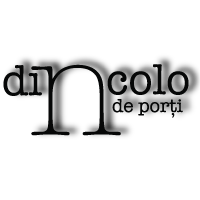Alexandru Iorga
Prepararea brânzeturilor este o ocupație tradițională de bază a locuitorilor din zona Bran-Moieciu. Pentru numeroși localnici, o sursă de venit importantă provine din comercializarea produselor lactate preparate la stână sau în gospodăriile proprii.
Brânza telemea, alături de brânza de burduf și cașul afumat, este unul dintre cele mai căutate produse alimentare tradiționale în zonă. Brânza telemea se poate prepara din lapte de vacă sau din lapte de oaie: „Din 10 kg de lapte de vacă se face 1 kg de brânză și din 4 kg de lapte de oaie se face 1 kg de brânză”. (Miron Zecheru, Sohodol) Un ingredient important pentru prepararea brânzei telemea, ca și pentru cea de burduf, este cheagul din care se face cașul. Cel mai folosit este cheagul de vițel: „E așa ca o bășică și se freacă cu sare în ea acolo, după ce e tăiat, dar imediat după ce a tăiat, imediat, imediat, că altfel nu mai faci cheag, atunci cât e proaspăt. Dintr-o rânză de vițel folosești mai bine de un an, vreo doi ani. Când sacrific un vițel, îi iau organul, îl pun la cămară, la rece și gata. Are un miros specific. Vițelul se taie pe la 7 săptămâni – două luni, cam când se ia cheagul pentru închegat brânza”. (Ion Cheroiu, Sohodol) Calitatea acestui produs tradițional este conferită în mare măsură de tipul de cheag folosit: cheagul natural (de vițel) este preferat cheagului sintetic, realizat cu bacterii de cultură. Importanța acestui ingredient este subliniată expresiv de Miron Zecheru din Sohodol: „Dacă ai în același grajd și cal și vacă, îi dai același fân, îi dai aceeași apă. De ce miroase diferit pipi de vacă față de pipi de iapă? E altcineva în stomacul calului și altcineva în stomacul vacii”.
Pentru a prepara brânza telemea, sunt urmate mai multe etape, după cum urmează: „Îi dai cheag și iei cu un castron după ce s-a închegat, nu-l mai aduni ca pe caș, nu-l aduni, îl lași așa cum e el, îl iei și îl pui în crintă. Crinta e niște forme… îl pui în crintă și el se scurge treptat, treptat, treptat, treptat și când ai văzut că scade iar, mai iei și mai pui. Tot așa se scurge treptat, tot în tifon, dar în crintă, în formă. Pe urmă îl lași până se scurge zerul și îl tai. După ce s-a scurs tot zerul îl tai și îl bagi în saramură. Că altfel nu stă”. O saramură bună se testează întotdeauna cu oul: „Saramura… se dă sare, în găleată, până stă oul deasupra apei. Deci atuncea e saramura bună. Dacă nu stă oul deasupra apei, nu e bună saramura”. Pentru a preparara saramura, este nevoie de apă sau zer și sare: „… cu apă. Poți să o faci și cu zer. Poți să o faci și cu zer. Ori cu zer, ori cu apă. Ce ți-e mai la îndemână. Nu e, nu e…, dar trebuie să fii atent să le… știi, că, de exemplu, telemeaua, dacă nu o bagi imediat la saramură și o mai lași, se acrește, se amărește. Nu o bagi imediat atunci când ai făcut-o…, o și bagi la saramură. Ea, mai ales vara, acum, timp de vară, se crapă, se face așa niște găuri prin ea și se amărește. Mai e încă zerul ăla care e în ea. Și din zerul de la telemea nu prea iese urdă, de telemea, dar de la caș…, faci brânză de la caș, zerul se face urdă, pui la foc, se fierbe și iese urda. Se face așa un strat deasupra, de urdă și ăla îi iei și-l pui tot în tifon, să se scurgă în timp”. (Gheorghe Gârțu, Moieciu de Sus)
Din instrumentarul uneltelor de păstorit, un obiect important este crinta, un vas masiv din lemn folosit pentru prepararea anumitor brânzeturi, inclusiv a brânzei telemea. Are forma unei tăvi elipsoidale cu o gaură de scurgere pentru zer și două mânere. Este un obiect care are o utilitate practică și este construit de obicei din lemn de paltin sau ulm. În funcție de cantitatea de caș folosită pentru prepararea brânzei, se alege o crintă mai mare sau mai mică: „Un cerc rotund, după cum a ieșit laptele, după cum e și cașul. Dacă e mai mare cașul, pui într-o formă mai mare. Dacă e mai mic, pui într-o formă mai mică. Sau dacă nu vrei să îl faci așa mare cașul și ai lapte mai mult, îl pui în două forme. Știi, să iasă de vreun kil și ceva. 1 kil jumate, două kile”. (Gheorghe Gârțu, Moieciu de Sus)
Georgeta Stoica, Paul Petrescu, Dicționar de artă populară, Editura Enciclopedică, București, 1997.




